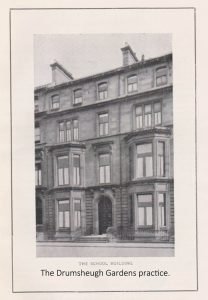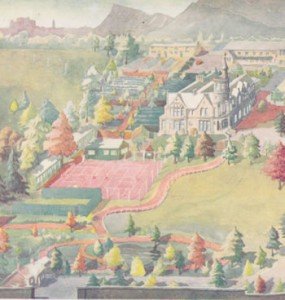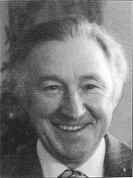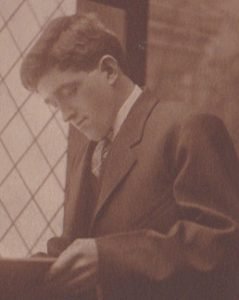Thomson Kingston Nature Cure, in its current form, is an amalgamation of many different “alternative” treatments for health including hydrotherapy, hygienism, actinotherapy, massage, osteopathy, exercise, food reform and vegetarianism. All the methods and principles are tried and tested and have a sound base in scientific research, but above all, they are commonsense approaches to living and good health that can be adopted into everyday life.
Hydrotherapy in its current form was established early in the 19th century; Vincent Priessnitz, a Silesian farmer, employed the techniques to treat his farm animals and also some human patients. He also used it to treat himself when he sustained a life-threatening injury that the medical profession had no cures for. Father Sebastian Kneipp also practiced hydrotherapy in Europe in a clinical setting. Many of his more extreme methods using sprays and other equipment have been modified – some say softened – over time but we have found them to be no less effective, but much more acceptable to our patients.
Hygenism or Natural Hygiene has a long history. Their advice on health and nutrition is broadly in line with the Nature Cure methods still used today. For example they have always extolled the values of a plant-based diet and highlighted the incredible self-healing powers of the body. Two leading figures in this field of alternative medicine who have had a deep influence on Thomson Kingston Nature Cure writings are Dr. John H Tilden and Dr Herbert Shelton. Another practitioner who had himself been cured of diabetes by Father Kniepp was Dr Henry Lindlhar, he was to prove a major influence on the emergence of the movement in Scotland.
Vegetarianism is certainly nothing new. It has been recorded in history dating back to the 5th Century BC with the ancient Greeks and ancient Indians practicing vegetarianism; their reasons were manifold but non-violence and purification of the body were generally included. Our current approach is broadly lacto-vegetarian, which includes some diary foods in the diet but the aim is towards food-reform and healthy balanced nutrition using fresh, raw ingredients and some simple cooking methods.
The man who pulled all the above modalities, and many more, into a cohesive approach, and brought his radical ideas back to Scotland was James C Thomson. Born in July 1887 in Angus, his father died when James was 6 years old, his mother – a fiesty woman by all accounts – was left to bring up three children on her own – James and his two sisters Agnes and Eva.
The family eventually moved to Edinburgh where James was educated at Daniel Stewart’s. He loved to browse the many bookshops on his way home from school and he bought early editions on hydrotherapy and dietetic reform. Some of these theses were written by the famous pioneers of hydrotherapy and hygienism, they fascinated him, but mostly from a slightly amused and highly sceptical point of view. Some of James’ friends were destined to be doctors and much to their mutual amusement James used to read passages from the books and ridicule the ‘quacks’ who had written them. Probably because of his farming roots he also had a fascination with the soil and ecology and read the works of, amongst others, Charles Darwin. He realised early on that there was a deep link between the soil and health.
INCURABLE ILLNESS
After a failed attempt to become a lawyer’s assistant and always entranced by the idea of travel – perhaps from reading the tales of Darwin’s voyages – James joined the Navy at the age of 16. After only 18 months at sea he suffered a life-threatening illness. He was discharged from the navy with an “acute lung condition” along with the news that he had only 3 months to live. This sledgehammer blow was delivered with a hearty slap on the back from a naval doctor. He was so incensed that there and then he vowed to live to spite those “naval expletives”! Basically he decided that death was not for him, he willed himself to get out of bed and leave the hospital – those were to be the first steps towards his belief in the healing power of positive thought.
Back home, he took the books that he had once ridiculed, down from the shelves and read them anew.
STARTING ON THE PATH BACK TO HEALTH
James’ mother sent him off to Perthshire to a relative’s farm for the fresh air and good honest food. He took with him the books he had previously ridiculed and from the information he gleaned he formulated diet, water treatments and outdoor exercise regimes for himself. He also prayed every day for the bleeding from his lungs to stop. He gradually realised that the bleeding had stopped and he had, to all intents and purposes, cured himself of his ‘terminal’ illness, and more importantly for him, proved the doctors wrong!
For some reason known only to himself, he headed for London and joined the Metropolitan Police. He was soon offered a post in the CID but by then his interest in “alternative medicine” had increased. Aged 22, he left the force and headed for America mainly to find out more about the Natural Therapeutics movement that was active and growing in parts of the United States of America.
GOING ACROSS THE ATLANTIC
In 1909 James visited Bernarr MacFadden’s sanatorium and Kellogg’s hydrotherapy centre but didn’t much like what he found at Battle Creek, their methods didn’t resonate with his outlook, he found them both too extreme and too specialised. So he headed for Chicago and there found Dr Henry Lindlahr – and what he had been seeking:
A comprehensive system of natural methods of treatment, bound together by a philosophy and resting on a firm scientific basis.
He spent four years training under Lindlahr in his sanatorium and was thereafter offered his own residential practice to manage, rumour has it that he was also offered half a mile of Florida beach by a grateful patient to stay on as his personal physician! He turned down both offers and decided that a holiday back in Scotland was needed.
Back in Edinburgh he found the bracing Scottish air much more congenial to his constitution and extended his stay. Mostly to pass the time he took a few patients at his mother’s vegetarian guest house. He quickly earned the nickname the “Sunshine Doctor” mainly because he recommended sun bathing and letting the fresh air to the skin as part of an overall health regime. This raised some eyebrows in the middle of the good middle class Edinburgh New Town.
His English counterpart Stanley Leif also returned from America with the Nature Cure message around the same time. Leif chose to work with Champneys to establish his practice and Naturopathy in England – while James chose to tread his own path and to be independent of any influence from business partners who might have had vested interests or contradict James’ vision for the future.
A FAMILY BUSINESS
As time progressed the family was drawn into the movement. Not long after James established his practice in the family vegetarian boarding house in Albany Street, Edinburgh he met and married Jessie Hood. Jessie was introduced to James by a mutual friend, she was a very sick young woman with an “incurable” heart disease. After a full recovery using Nature Cure methods Jessie married James and trained in Naturopathy and Osteopathy and after the arrival of their first child, Leslie, started to specialise in working with women and children in her Free Clinic.
In 1916 his first daughter Hazel was born and he published his first book “An Introduction to Nature Cure”.
In 1917 the buff envelope arrived with call-up papers. He had sent a few back with “not known at this address” but now he had to face the tribunal. He went fully expecting to go to prison, but he based his case purely on humanitarian grounds and to his amazement the tribunal agreed to exempt him. He was a little deflated, because James loved nothing more than a good verbal battle!
PROSPECTING
In 1921 James and Jessie took a trip to USA to prospect for a suitable place to start a practice. He thought that the USA might have a more open attitude to the alternatives he offered but he found that things had changed, and the tide had started to turn against Naturopathy in favour of the establishment since his four years working with Dr Henry Lindlhar. He visited his old mentor who advised him not to open a residential practice on either side of the Atlantic.
1922 back in Edinburgh he considered a residential practice! His rooms in Albany Street had become a little small for the practice, the family and the newly established Edinburgh School of Natural Therapeutics which was taking up more and more of his time. He had his sights on Craigend Park – a large Victorian pile in 10 acres of grounds on the south side of Edinburgh but it was to be 16 years before he realised his vision.
THE EPI-CENTRE OF THE MEDICAL ESTABLISHMENT
1923 his second daughter Joyce was born, in that same year the famliy sold the property in Albany Street and bought a large house in Drumsheugh Gardens. This was in the very heart of the World’s Medical Establishment in Edinburgh. He extended the classrooms for the ESNT and continued to build up his practice.
 He very much enjoyed being a Nature Cure practitioner right under the noses of the best doctors in Edinburgh. Jessie, gracious and polite, got on with extending her practice and now specialised in treating children. She offered treatment through her Free Clinic to parents who could simply not afford to pay for a doctor to see their children. A service that she continued until well into the 1950s
He very much enjoyed being a Nature Cure practitioner right under the noses of the best doctors in Edinburgh. Jessie, gracious and polite, got on with extending her practice and now specialised in treating children. She offered treatment through her Free Clinic to parents who could simply not afford to pay for a doctor to see their children. A service that she continued until well into the 1950s
In 1925 her excellent book “Healthy Childhood” was first published, it went through two re-prints during her lifetime and a further re-print after her death. It is still available and full of good sound advice.
KINGSTON BECOMES A REALITY
1938 James finally managed to buy Craigend Park – and he quickly renamed it The Kingston Clinic. Turning the huge Pilkington designed Victorian mansion house back into habitable condition after being used as a school and nurses accommodation was a huge family effort. It was all hands to the pumps as every room had to be repainted, repaired, re-varnished, re-wired and furnished. To say that it was bare boards was an understatement! After herculean efforts the clinic was opened in 1939 – just in time for the Second World War! So, in addition to working in the clinic Leslie, Hazel and Joyce also had to work on the land – carrying on the pacifist aspects of the nature cure lifestyle.
In addition to the main house there were a range of other houses and buildings in the eight acres of grounds. The Annexe had bedrooms and schoolrooms, the latter were the perfect new home for the Edinburgh School of Natural Therapeutics. Now well established, it saw regular intakes of students from all over the UK and from overseas. The students graduated and set up their own practices all over the UK.
In 1947 the first copy of Rude Health – The Kingston Chronicle was published – this periodical continued being produced initially every month, then every other month then every now and then until 1967.
THE TAIT VISION FUND
1948 The Tait Vision Fund was established with a large donation from Adam Tait to enable the establishment of new practices and to support the treatment of patients at Kingston and with ESNT graduates. The fund has been contributed to all through the years and is still live today.
So Nature Cure in Scotland came out of James C Thomson‘s personal journey back to health and resulted eventually in the establishment of the Edinburgh School of Natural Therapeutics (ESNT), the Incorporated Society of Registered Naturopaths (ISRN), the Kingston Residential Nature Cure Clinic in Edinburgh, and the Tait Vision Fund (TVF) – as well as a huge body of written work. Many of the booklets are still available to buy or to doenload in PDF format on this website.
LIFE AT THE KINGSTON CLINIC
The Kingston Clinic was a vital and alive place. Up to 30 patients could stay at any one time in the main house and the Annexe. There were 6 very basic chalets (one outside cold tap and one outside toilet) for students or hardy souls. They were just beside the two tennis courts. There was a wooden building that housed a Gym, Sunbathing Enclosures, a two acre organic kitchen garden and behind the Annexe were extensive glasshouses and a gardener’s cottage. There was a Stable block/coach house where the Free Clinic was run and students stayed. The Corner House was next to that and there was also a lodge cottage. A pond that froze over in the winter and endless hiding places for the 10 grandchildren.
Kingston was very much a family run business and they were all expected to work in the clinic. Hazel married student Peter LaBarre and later spent some time running Blunham House in Cambridgeshire as a nature cure centre, Joyce married student Alec Milne who became a co-director and practiced at Kingston until the day it closed in 1988. He continued to practice in Edinburgh and Glasgow well into his 80s. My father married Olive Homer Lane, she was the daughter of radical penal reformer Homer Lane; who founded The Little Commonwealth; and later she was adopted by A S Neill of Summerhill School. Leslie was a slightly reluctant practitioner and was always disappearing off to his workshops and making panoramic cameras, projectors, transistor radios in matchboxes and repairing clocks in his spare time.
James C Thomson was a big man in many senses of the word! His recovery from TB in his late teens made him appreciate every extra day of his life. If you were not busy doing things, why not? Every day was a gift – make the best of it! He would ask patients if they had a reason to get better – if they didn’t he would tell them to get one! He would tell them that if they were not getting better it just be because they were not doing what he had told them. Many a chastened patient upon retiring to bed would have a visit from Jessie Thomson with a hot water bottle, some grapes and some kind words! The Kingston Clinic was truly a family run place.
The Kingston Clinic closed in 1988, the large rambling building was proving too expensive to upgrade for current fire regulations and the modest fees that were charged to residential patients did not bring in enough to keep up with general wear and tear. The grandchildren had grown up and followed their own paths and for the “children” it was time for retirement. Alec Milne continued in out patients practice until 2007. The reputation of the Kingston Clinic is still legendary in the world of Naturopathy.
 |
 |
 |
| James C. Thomson 1887-1960 | C. Leslie Thomson 1914-1992 | Alec Milne 1921-2010 |


